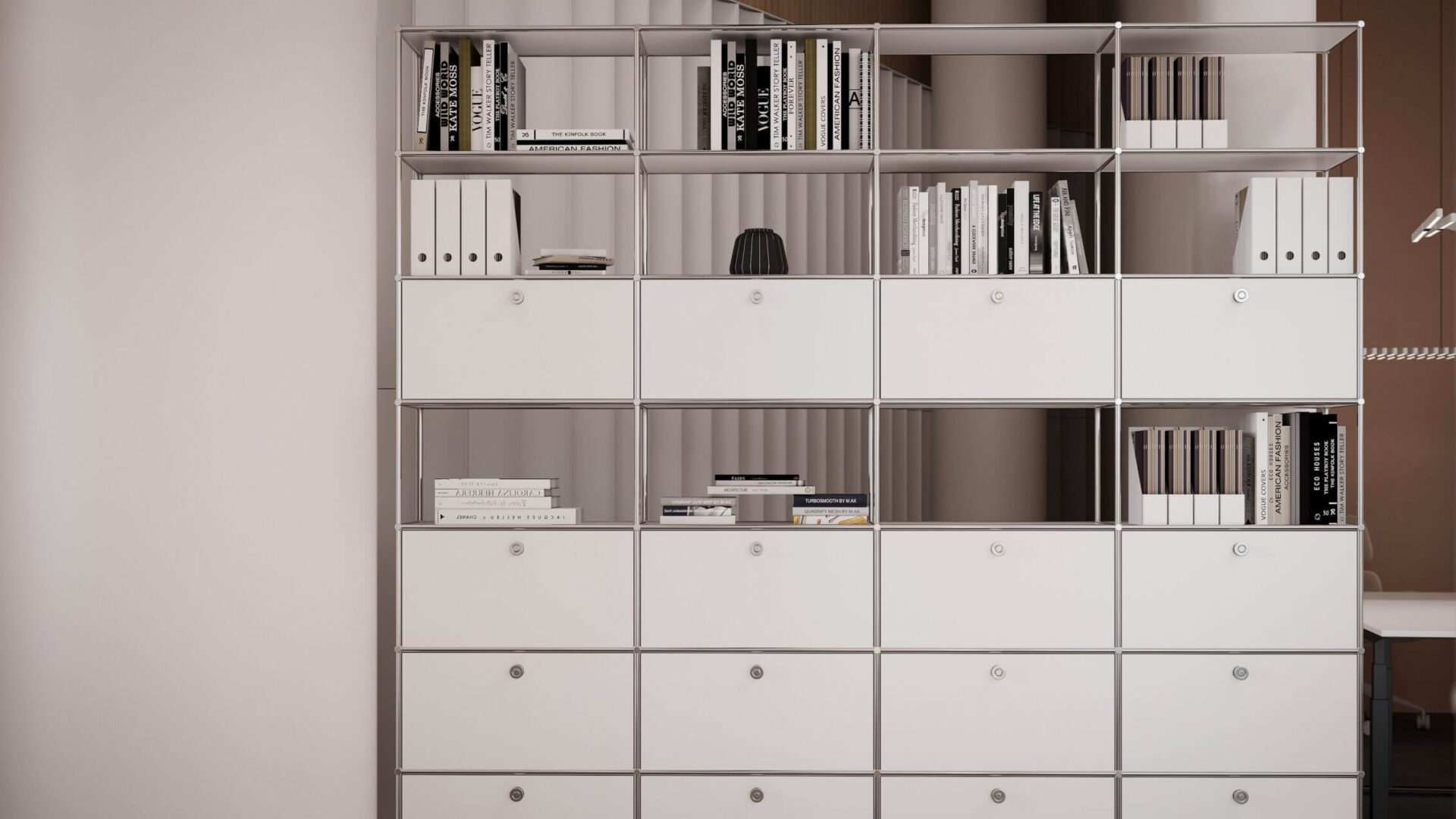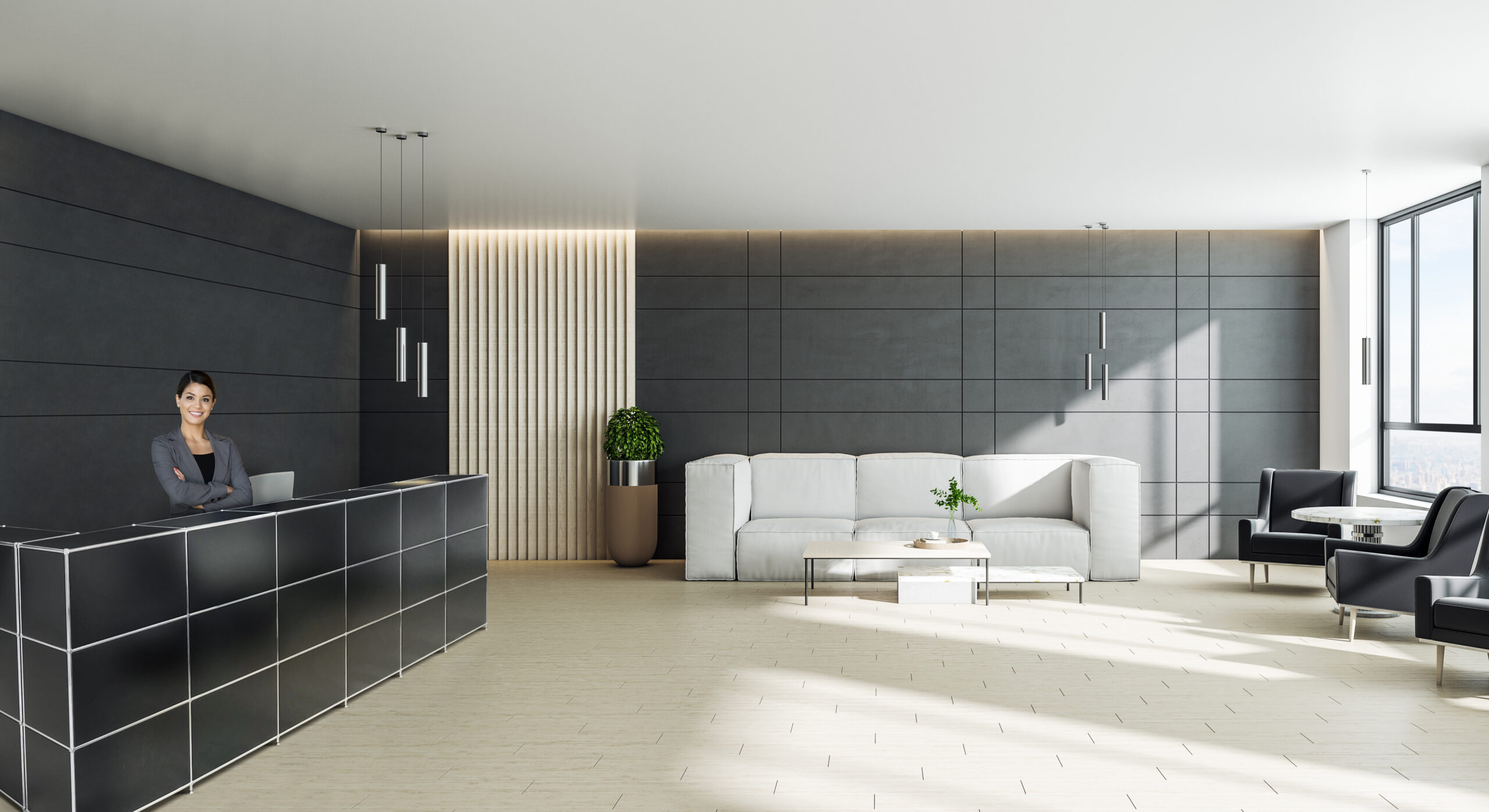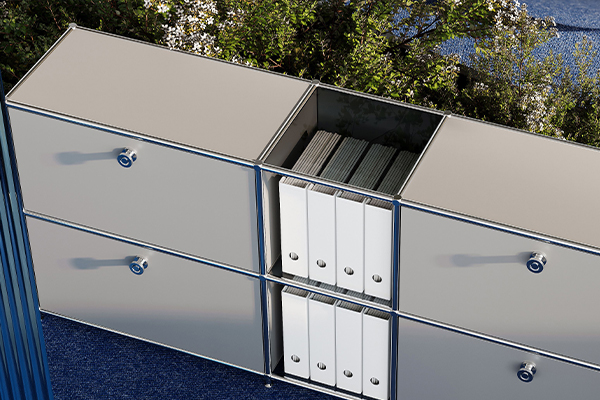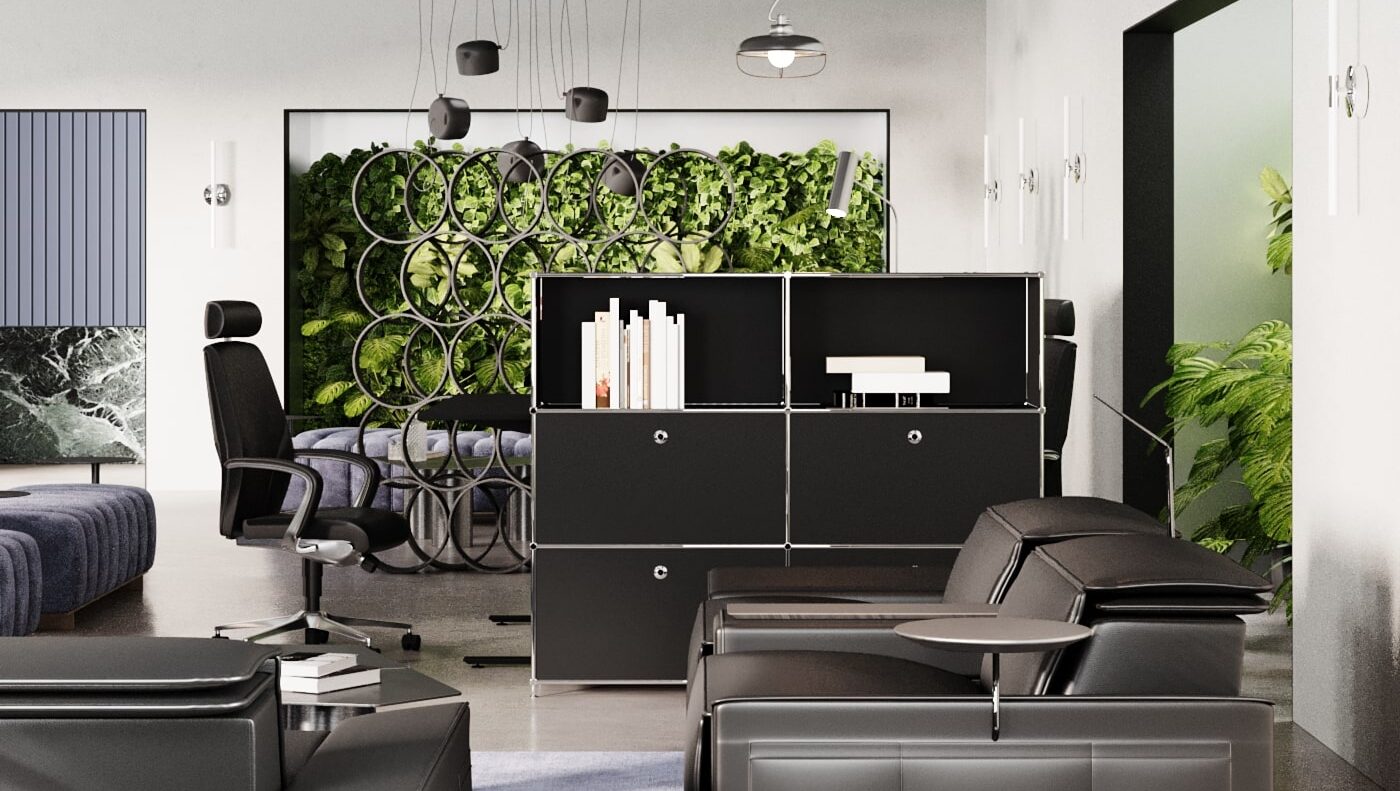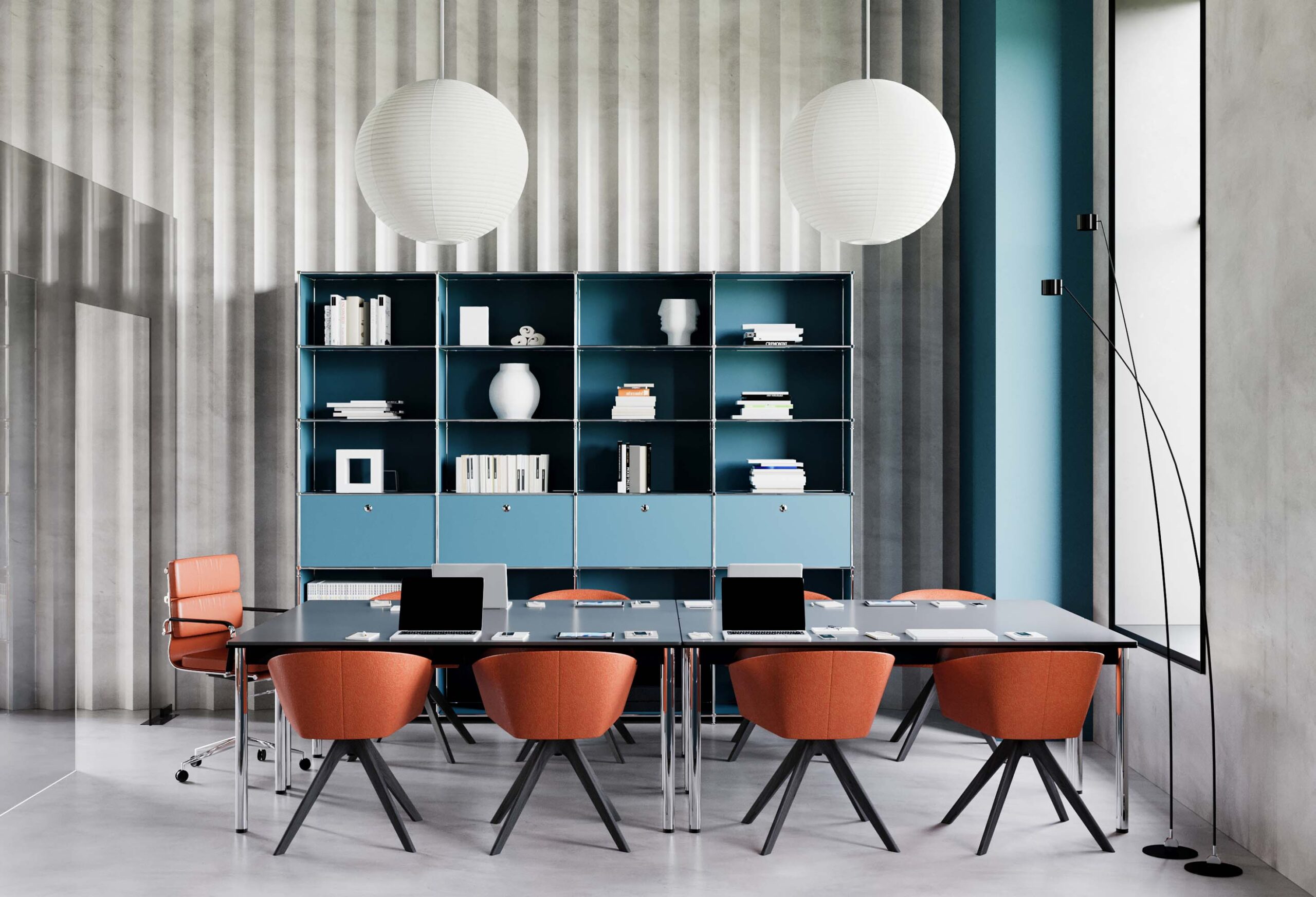Inhaltsverzeichnis
ToggleTips and inspiration for the workplace at home
Are you self-employed, or does your employer allow you to work fully or partially from your home office? Congratulations!
No matter what you call your workplace at home: Home Office, Study, Teleworking – When setting up your workspace at home, there are a few aspects you should consider to create a productive work environment. This guide summarizes the most important points to make your home office beautiful and functional. Our tips and ideas will help you make working from home more productive and attractive.
This is what awaits you in this guidebook:
- The right place for the home office
- The right office furniture for the home office
- The right lighting for the home office
- Tidiness and storage space in the home office
- Create a pleasant atmosphere with decoration
- Frequently asked questions about the home office
The right place for the home office

If you regularly work from home, you should be able to set up your study in a separate room. This is even more important if you work with one or more large screens. A well-furnished home office helps you to work in a concentrated, efficient and motivated way. It’s also just as important to be able to block out work. The easiest way to do this is to simply close a room door.
If you only work from home occasionally, and the workplace requires little more than a laptop, a phone and perhaps a printer, then a suitable workstation can be set up in many places. The bedroom, dining room or living room are popular places. A secretary or a desk with a shelf will find a suitable place even in a niche under a sloping roof or a staircase.
Tip: Choose a quiet place
If you do not live alone, choose the quietest possible place for your work corner, so that both family life and work harmonize in the best possible way.
Tip: Weigh the pros and cons
Home office in the bedroom

The workplace in the bedroom is still remembered by many of us from the children’s room or shared apartment. The unbeatable advantage: the bedroom is not used during the day and is therefore a very quiet place to work. If you find it difficult to switch off from work in the evening, you should preferably not be able to see the work area from your bed, design it in the style of your bedroom and always stow away your work utensils after work.
Home office in the dining room

The dining room or kitchen table is often the first choice for the home office. Here, a mobile drawer unit offers storage space for work utensils. Files and printer can be placed in a sideboard that harmoniously blends with the style of the dining room.
Home office in the living room
The living room is often the largest room next to the bedroom and thus offers the most opportunities for integrating a workstation. It is best to choose a quiet niche near the window.
Tip: Separate workstation visually

In order not to be constantly reminded of work even after work hours, it is advisable to visually separate a work corner in the living room, dining room or bedroom from the rest of the room. A shelf, plants or even a beautiful curtain are effective helpers. If you do not need a large desk, a secretary or sideboard with flaps can be an excellent solution. This office furniture provides shelf space for a laptop as well as storage space. When they are closed, they discreetly hide the work utensils.
The right furniture for the home office

To create a beautiful and pleasant workplace at home, you may be guided primarily by your personal preferences. Furnish your office according to your taste and style, so it integrates perfectly with the existing environment. This is especially important if you do not have a separate study.
Table, chair and storage are the three most important pieces of furniture for your workspace at home. You work from home only a little? Then the dining table and dining chair can be the perfect solution. Combine it with, for example, a mobile drawer unit as storage for your work utensils; that’s all it takes.
Do you work from home a lot? Do you have your own study? In this case, it is recommended to pay more attention to the aspect of ergonomics in the workplace. Then you should in any case use a good desk chair that provides optimal relief for your back. And then a height-adjustable desk is also recommended, so you can switch effortlessly between sitting and standing. This prevents tension and your spine will thank you.
The right office chair

When it comes to ergonomic work, the right desk chair is a top priority. Good office chairs today come in many materials and colors and excellent designs.
So even the optics do not have to come up short!
A real desk chair best supports ergonomic sitting. But only if you can also set it correctly:
- Seat height and seat depth: You are sitting correctly when your hip, knee and foot joints are approximately at right angles. Seat depth: You are sitting correctly when a distance of three to four fingers width remains between the front edge of the seat and your lower leg while you touch the backrest with your pelvis.
- Armrests
You are sitting correctly when both shoulders are relaxed horizontally while your forearms rest on the armrests. - Backrest
Your back is optimally relieved when the lumbar support is approximately at the level of the waistline.
Tip: Change your sitting and working position frequently
Experts advise to change position every 15-20 minutes. The optimal ratio between sitting and standing should be 50% each.
Tip: In our blog post“Adjusting the office chair correctly” you will find more interesting information on this topic.
The right desk

If the home office becomes the permanent workplace, the same working conditions should be observed as those that apply to the employer in the office. Thus, the working surface of a desk should be at least 160 x 80 cm. Ideally, you should use a height-adjustable desk.
- Size
A standard desk is at least 160cm long and 80cm deep.
If little space is needed for documents or screens, e.g. because most of the work is done on a laptop, 140x80cm is a good alternative size. - Height adjustability
Often screen work is associated with an unhealthy posture. This quickly leads to tension in the neck/shoulder area. You should therefore change your working posture more often. A height adjustable desk makes these changes very easy. Want to learn more about height adjustable desks?
Tip: Storage space at the desk
Secretaries are wonderful for small area. If the workplace may be larger, a desk with integrated storage can be considered. However, they can quickly look clunky. More elegant and versatile here is often a roll container under or next to the desk.
Storage space and order in the home office

Make it easy to stay organized and block out work after hours. If everything has its place in the home office, you can work more productively. Can everything disappear into drawers or behind flaps, so your office can be effortlessly “close” at the end of the day.
What furniture is best suited?
Open storage is less expensive, but it quickly looks untidy. Closed storage always makes the home office look perfectly tidy.
High storage uses m3 instead of just m2! Modular furniture helps to make the best use of existing space under a sloping roof or stairs, for example, because the heights can be adjusted accordingly.

The right lighting in the home office
Sufficient daylight is the be-all and end-all! For focused light, use a desk lamp. Swiveling luminaires are particularly suitable because they can be adjusted depending on the working position.
Create a pleasant atmosphere with decoration

In the home office you may decorate according to your preferences. Create exactly the atmosphere in which they feel comfortable and can work productively!
Tip: Integrate plants
Plants spread a homely atmosphere and also provide good air.
Tip: Create space for pauses for reflection
For example, use beautiful pictures on the wall to give their eyes relaxing moments away from the screen.
Frequently asked questions about the home office
What do you need for the home office?
To work regularly from a home office, you ideally need a study with a desk, office chair, storage and technical equipment. PC or laptop, monitor, printer and telephone are standard. In any case, fast and reliable WLAN is usually indispensable.
What does home office cost and who pays the costs?
Pads, pens, printer paper and printer cartridges incur costs. Communicate with your employer in advance about reimbursement. Those who are sent to the home office by their employer should be able to count on a budget for furniture, equipment and maintenance. Higher electricity consumption and possibly even higher heating costs can also be expected. Increasingly, a monthly lump sum is offered here by the employer.
How should the desk be located in the home office?
Poor lighting conditions tire the eyes very quickly. The place for the desk must have sufficient light, preferably daylight. The light should not be reflected in the monitor under any circumstances. So place your workstation so that you do not sit with your back to the window. Ideally, place the desk at a 90° angle to the window or with a view out the window.
Little space in the home office – What can I do?
If you work only with laptop:
- use a flap in the sideboard or highboard as a small desk
- use a wall mounted table of little depth as a desk
- use your walls. High storage uses m3 instead of just m2!
Inspiration examples clever use of space



Want more tips on how to set up your office right? In the linked blog article you will find 6 useful tips.
Wie hat Ihnen der Artikel gefallen?
Auf die Sterne klicken, um zu bewerten.
Durchschnittliche Bewertung 0 / 5. Anzahl der Bewertungen: 0
Noch keine Bewertungen. Geben Sie die erste Bewertung ab.


